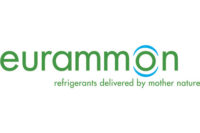Natural refrigeration technology is gaining traction with end users, according to speakers at the Atmosphere Conference in March, held in Brussels, but, despite technological successes, there are still challenges to overcome in the form of regulatory obstacles and skill shortages.
Supermarket Transcritical CO2
Supermarket end users reported a key development with the first successful year’s operation of transcritical CO? refrigeration systems in warmer climates. Ambient temperatures above 20°C, previously considered unfeasible for transcritical CO2, now appear to be not only achievable but cost-effective, thanks to recently developed parallel compression and ejector technology.
European retailer Carrefour is spearheading the drive with trial stores in Spain. Asset manager Jean-Michel Fleury reported the trial store in Valencia, which has now been running a transcritical system for 15 months, is showing an astounding return on investment of 1.2 years.
The store, which utilizes a range of energy saving technologies to augment the transcritical system, has posted exceptional operational energy savings. Even without the extra elements, such as glass doors and LED lighting, the net refrigeration system savings registered at 13 percent, Fleury reported.
Arguably more impressive than the energy saving is the proposed cost saving: Carrefour estimates that Alzira will save €792,000 ($854,884) over a 10-year period, despite an increased capital expenditure for the equipment of €94,000 ($101,416).
Its Alzira store uses so-called parallel compression technology that overcomes the inefficiencies associated with carbon dioxide in warmer ambient temperatures.
But, Fleury said another trial store in the region, at Castellon, which uses proprietary Ejector technology as well as parallel compression, is expected to provide energy savings in excess of the Alzira stores.
Gabriel Romero, technical director, Auchan, also reported successful operation of a transcritical booster system in the retailer’s Simply supermarket in Bilbao, Spain. Operating since last July in ambients of 19°-20°C, the system’s energy performance has exceeded expectations, he said.
However, Romero said the cost of components and the lack of skilled maintenance engineers remained serious obstacles to progress.
Fleury called on national associations, governments, and the supply chain to encourage appropriate training of the installers, and he urged suppliers and installers to invest the time and technology into improving the installations for warmer climates.
Michel de Rooij, manager, store technology, Ahold group, added that the next challenges for his group were to find the appropriate natural refrigerant solution for small store footprints and for a/c systems.
There was more encouraging news from the Belgian market, where Georgios Patkos, director, technical department, the Delhaize group, reported the price gap was narrowing between natural components and the norm. The cost of installing a CO2 transcritical booster system is now just 4 percent higher than an efficient hydrofluorocarbon (HFC) system running R-407F, he said.
The supermarkets were of a consensus that finding a standard natural solution for the HVAC system was more of a challenge. Regulations limiting charge size and use of flammables in buildings are restricting use of HCs in some countries, and there have been calls for the European Commission (EC) to make more concessions to HCs in its regulatory framework.
Supermarket managers agreed that harnessing waste refrigeration heat and using absorption or adsorption chillers was one way of providing HVAC from the transcritical systems.
The scale of the task facing those who have to comply with the F-Gas regulations in Europe was demonstrated by Olaf Schulze, director, energy management of German retail chain, Metro. Schulze outlined a 10-year program of 483 European store upgrades as part of its F-Gas exit plan — a program that will cost more than €1 billion. But, as an indication of how CO2 technology is being exported around the world, he reported that among the upgrades planned this year are installations in Metro stores in China and Russia.
Content for the European Spotlight is provided courtesy of Refrigeration and Air Conditioning Magazine, London. For more information, visit www.racplus.com.
Publication date: 4/20/2015
Want more HVAC industry news and information? Join The NEWS on Facebook, Twitter, and LinkedIn today!






